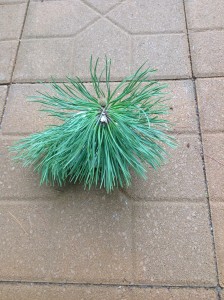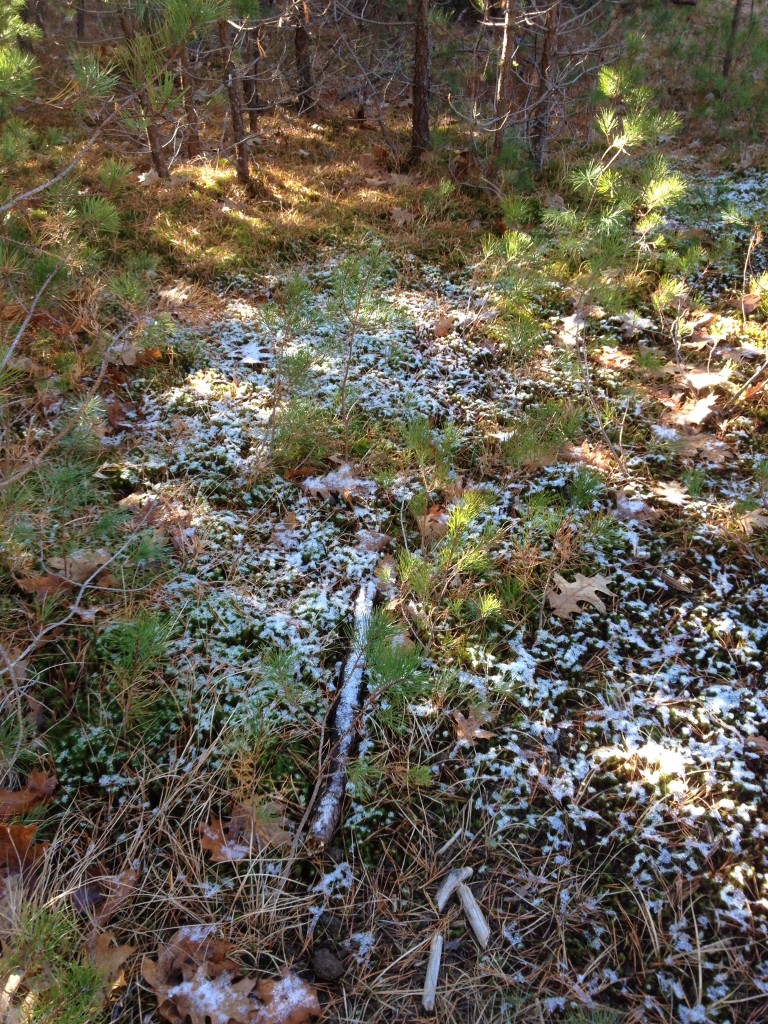The expression “a pitch pine plain” is but another name for a poor and sandy level. Journal, Thoreau, 11/26/60
Morning of fog, a quiet gray in which the jay squalls. And I am thinking of the pitch pines, whose trunks rise like columns of smoke in the midst of our town Commons. My thoughts are born both of the morning’s stillness, which has a treelike calm, and of Henry Thoreau’s attention to pitch pines in his journal from late 1860.
I arrive at my journal readings much as a windbourne seed arrives at its patch of ground, where it will either languish or “take.” It turns out to be exactly a morning for reading about trees. The fractious and fractured world recedes when I consider these columns of patience and the way they succeed in unpromising ground, and today, as in many recent days, that seems necessary.
Often, during passes through our “poor and sandy level” in the Commons, I collect one or two sprigs of pitch pine and carry them home. There, they make a handsome reminder for a week or so before they dry and go over to tan color.
Pitch pines also attract me because they implicitly consider what’s next. Where and how they grow always tends toward a next forest; they are not usually a climax tree. In these entries, Thoreau is working out forest succession, wondering at the way cut-over Concord forest regenerates. And I suppose that by thinking about trees, rather than the news of the world, I am doing the same.
I like too the exuberant needle-burrs that grow directly from the trunk, a “habit shared only by the pond pine,” my Sibley Guide to Trees points out. These tufts look like little explosions of thought from the dark, scaled bark.
Whenever a strong wind has blown through, the woods are full of these little blowdowns. The thick bunches of dense needles that sometimes curve and swirl as they grow must catch the wind and overwhelm the soft joint with the tree. I have a lot choice as I walk.







